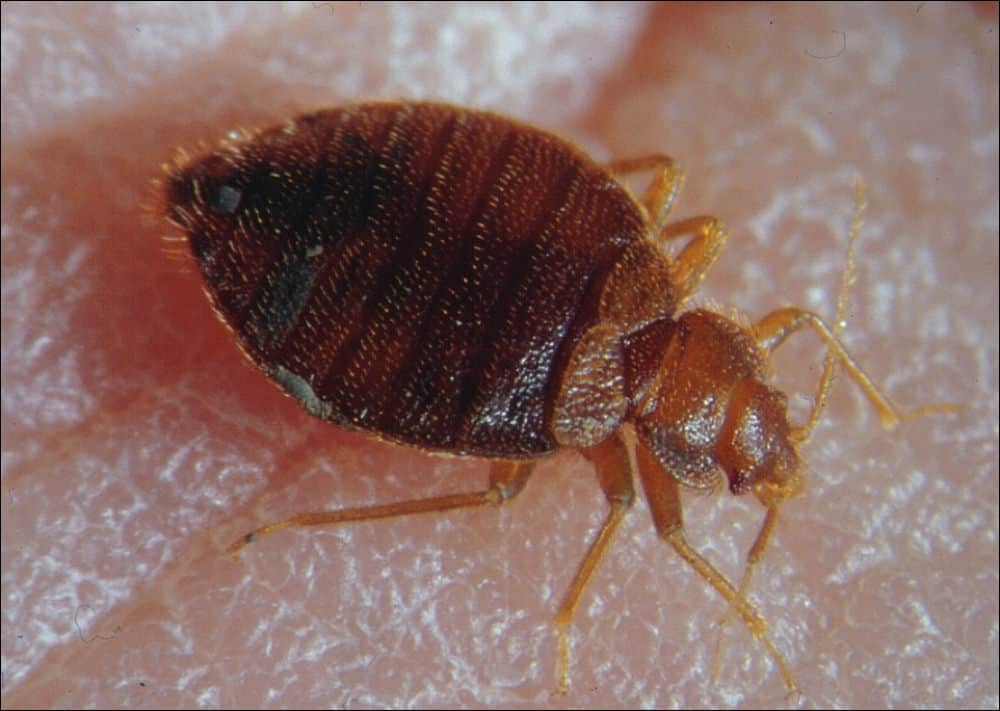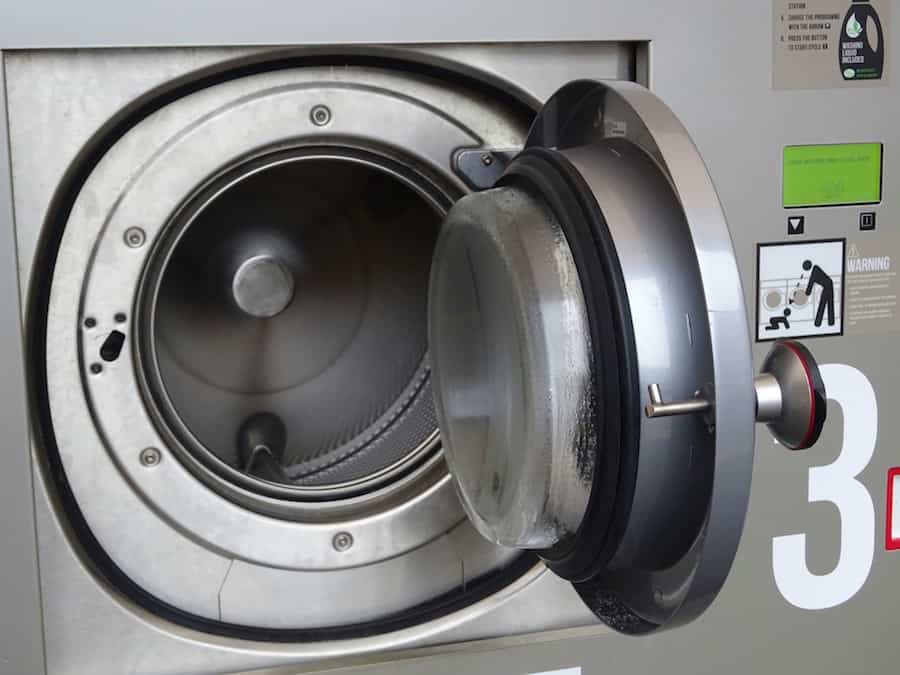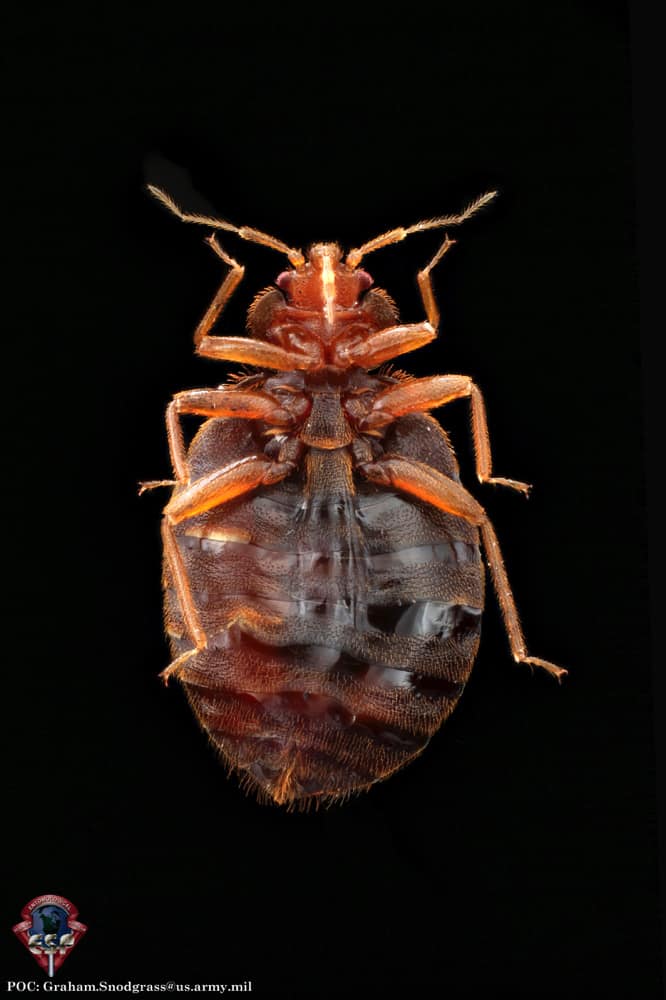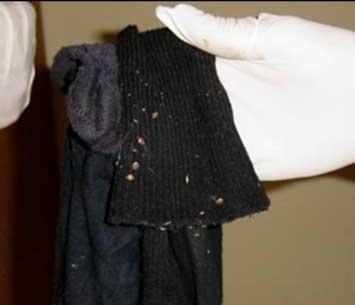How to Kill Bed Bugs
Bed bugs are stubborn. They’re small, good at hiding, and difficult to spot. And once you do spot them, it can be hard to eliminate them from your home because they tend to congregate out of sight and in hard-to-reach places.
Learning that an area of your home is crawling with bed bugs is always bad news. But the good news is that you can tackle the problem yourself in most cases.
In this article, we’ll go over all you need to know to identify a bed bug problem, kill the bed bugs in your home affordably and easily, and how to prevent bed bugs from returning. If you follow these guidelines, you will soon be free of bed bugs again.
How to Know You’re Dealing with Bed Bugs
The first step to dealing with bed bugs is to know the enemy. Knowing a thing or two about bed bugs will help you detect their presence early, and making sure that the infestation is in fact a bed bug infestation will ensure that you take the right course of action to deal with it.
So, let’s go over what bed bugs look like, what they do, and how you can know the infestation you’re dealing with is bed bugs and not some other type of insect.
What Bed Bugs Look Like
Bed bugs are parasitic insects, and they can be hard to notice when they invade your home. That’s because they’re decidedly on the smaller side. They’re visible to the naked eye, but at 0.18 inches in size when fully grown, they’re hard to find unless you go looking for them.
When you do find them, what you’ll see are small insects with six legs and a flat-looking body. They have a reddish-brown coloring that changes in shade depending on how recently they’ve fed (a hungry bed bug will have a lighter shade, while one that has gorged itself on blood will have a darker coloring).

It’s not always easy to distinguish bed bugs from other similar insects. Spider beetles and carpet beetles, for instance, can look liked bed bugs to the untrained eye. To be sure, don’t just look at the insect itself – look for the symptoms of an infestation, too.
What Bed Bugs Do
As the description above makes clear, bed bugs are a bit nasty looking. But it’s not just the ick factor that makes them a nuisance, it’s the fact that they feed on human blood.
Bed bugs are nocturnal, which is how they earned their name. Since they like to feast on us and they tend to be active when we’re asleep, they’ll normally cluster in or near beds.
Since they’re very small, they tend to hide out of sight, in the seams of the mattress, the joints of the bed frame, or cracks in the headboard. If the infestation is quite serious, however, some of them will migrate away from the bed and you might find them hiding in other parts of the room, especially in corners (in walls, drawers, or anywhere else where two things meet and form a narrow space for them to hide in).
Because they’re active at night and they’re difficult to see, the best way to find them is usually to arm yourself with a flashlight and shine it on all the parts of your bed that you don’t come in contact with much – the back of the headboard, between the mattress and box spring, under the linen, and so on.
Signs of a Bed Bug Infestation
Since bed bugs feed on your blood, the first sign you will probably notice are bites on your skin.
Bed bugs don’t bite at any one particular location. The bites are more likely to show up on any part of your body that stays exposed while you’re sleeping, such as the face, hands, and arms. But that doesn’t mean, however, that your clothing will prevent you from getting bit. Bed bug bites often show up on parts of your body that are covered by pajamas, just in smaller numbers.
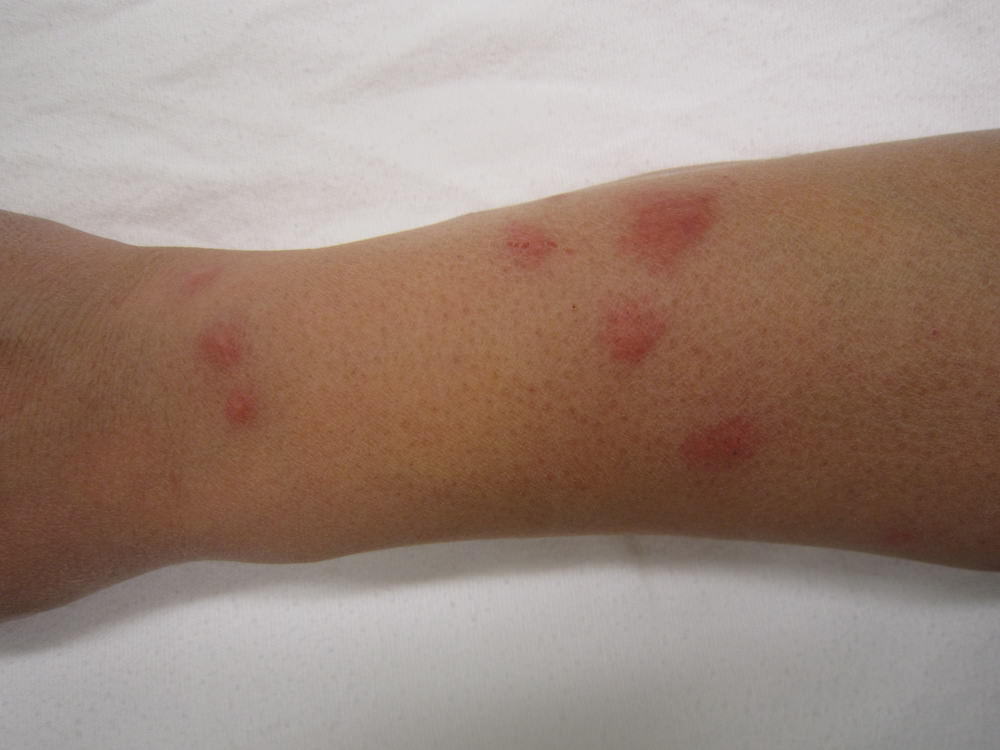
For most people, the bites are fairly minor. The skin around the bite will redden and there might be some low-level irritation, inflammation, and itchiness. Some people, however, are more sensitive to them and may develop more serious symptoms, like a painful, burning sensation. If two people share a bed, then, it’s quite possible that only one of them will have visible and noticeable bed bug bites while the other will appear to be unaffected. Even if just one person who sleeps in the bed has bites, it’s a sign that you have a bed bug problem.
The bites, however, are hard to distinguish from other types of insect bites, including mosquito bites. The bites might be your first clue that there are bed bugs around, but the real tell-tale signs are the ones you’ll find in your sleeping environment.
Inspect your linens, sheets, pillows, and mattress for eggs and eggshells (these are very small, so you may need to look closely) and shed skin. You might also find bed bug droppings, which are tiny dark spots that may seep into the fabric it rests on.
You might also find some reddish stains. These result from bed bugs being crushed under your weight.
If you spot these signs, you should assume that you have bed bugs and take action accordingly, even if you can’t find any live bed bugs in your sleeping area. They can often tuck themselves away out of sight, especially during the daytime. And since female bed bugs can lay up to three eggs per day, having just a few hard-to-find bed bugs can leave you dealing with a serious infestation in no time.
Should You Go It Alone?
If you have bed bugs, you might be worried about what comes next. Calling in an exterminator can be quite inconvenient, and you might worry about being stuck with a bill that stretches your budget for the month.
So, naturally, many people wonder whether they can deal with their bed bug infestation on their own, without the help of a professional.
Thankfully, in most cases, you can certainly handle a bed bug problem on your own (there are exceptions, and we’ll get to those later in the article). Unlike some other insects that feed on blood, bed bugs don’t transmit diseases to humans, which means you don’t have to treat it like an emergency and can take matters into your own hands. (Though note that, while not urgent, you should still deal with the problem immediately – an infestation that goes on for too long becomes harder and harder to eliminate.)
Before you start dealing with an infestation on your own, however, you should know that it can be challenging. Bed bugs hide in some hard-to-find and hard-to-reach spaces and they reproduce quickly, so eliminating them once and for all is not always an easy feat.
But if you’re willing to put in the work, are a bit persistent, and understand that this might be a job that might have to be spread out instead of just done over a weekend, then getting rid of the infestation yourself is a cheaper, simpler way to do it. And once it’s taken care of, you also get the satisfaction of a job well done.
In the next few sections, we’ll go over the steps you need to take to eliminate bed bugs from your home.
Containing the Infestation
Before tackling those pesky bed bugs, you need to take steps to contain the problem and keep it from spreading. If you kill off the bed bugs in their current spot, it won’t do much good if they’ve managed to take hold and start reproducing in another area of your home. If that’s the case, you won’t get to enjoy your victory over bed bugs for long before they start being a nuisance again.
Here are a few things you should do to make sure the bed bugs stay in one spot.
Be Careful When Carrying Things Out of the Room
Bed bugs will crawl from one location to another, but a much faster mode of travel for them is to be carried around in our stuff.
Bed bugs often hide in suitcases, bags, and backpacks. Moving those around your home could lead the bed bugs to infest another area.
They also often camp out in different items that you have laying around in your room. If you want to clear some items from your room before treating it for bed bugs, you’ll need to be careful. Put the items in a plastic bag (a trash bag will do) and seal it. Don’t take the items out of the bag again until you’ve treated them for bed bugs. And of course, make sure you don’t re-use the bag for other items. Yes, it’s a bit wasteful, but throwing out the bag and using a new one to move other items with will help you keep the bead bugs from spreading.
Inspect Your Clothes
Bed bugs also travel on people’s clothing. If you know you have a bed bug problem, you should inspect your clothes before leaving the affected area or walking around your home. You can’t be too thorough – bed bugs will even hide in your shoes or your socks. And they love finding those seams, nooks, and hidden spots. Even the lace holes of your shoes (not to mention the shoelaces themselves) are potential sites for bed bugs.
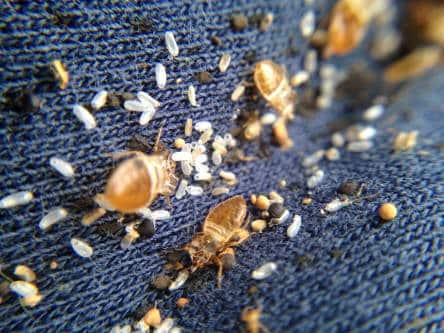
One extra tip is to stick to wearing light colors until the issue is resolved. That way, if some bed bugs do cling to your clothes, you’ll have a much easier time spotting them.
Empty the Vacuum Cleaner
If you run the vacuum, you might suck up some bed bugs or bed bug eggs. Because of this, you should empty your vacuum cleaner after every single use to ensure that the bed bugs don’t multiply while they’re inside it or crawl out and find their way to a new spot in your home.
If your vacuum cleaner is a model with a bag, make sure the bag is well sealed and then leave it in an outdoor trash can (not one inside your home). If, instead, your vacuum has a compartment that collects the dust, carefully empty it into a plastic bag and seal that bag tightly. And again, dispose of it in an outdoor trash can.
There’s No Need to Get Rid of Your Furniture
One of the first things some people do when they find out they have bed bugs is throw their mattress and other furniture out to the curb. (That’s why you should be careful about picking up free mattresses, as mentioned above.)
It’s an understandable reaction, but there’s really no need to do it. Once you exterminate the bed bugs, your mattress and other goods will no longer be infested and they will be in perfectly usable conditions.
But there’s another reason to hold on to the mattresses and furniture that have been affected. Not only are they still usable after they have been treated, but getting rid of them before they have been treated can just make the problem worse. Transporting infested furniture through your house risks leaving some bed bugs or their eggs in a new part of your home, causing a brand new problem for you to deal with. And of course, anyone who then takes or handles the furniture you’ve gotten rid of will likely be dealing with their own bed bug problem as a result.
Preparing Areas for Treatment
Alright, so you’ve located the bed bugs and contained the infestation. Time to exterminate those little nuisances, right?
Well, not just yet. You have one more step to take before killing the bed bugs. First, you have to prepare the affected areas for treatment.
If you’ve read this far, you’ll know that bed bugs are nothing if not sneaky. They’re very good at hiding and staying out of reach, which makes it harder to kill. It’s not unheard of for someone to treat an entire room (or so they thought, anyway) only to have the infestation return because they missed one or two tricky spots where the bed bugs had set up camp or laid eggs.
Preparing the area means eliminating some common bed bug hiding spots to improve the effectiveness of the pesticide.
If you want to be sure the bed bugs are out in the open, here are some important steps to take.
Clean the Affected Area
If you’ve been meaning to declutter your room, now’s your chance. Bed bugs love to hide in clutter, so the first thing you should do is pick everything up from the floor (like boxes or clothing) and then start tackling the clutter throughout your space. That includes everything from the magazines on the nightstand to the contents of your drawers.
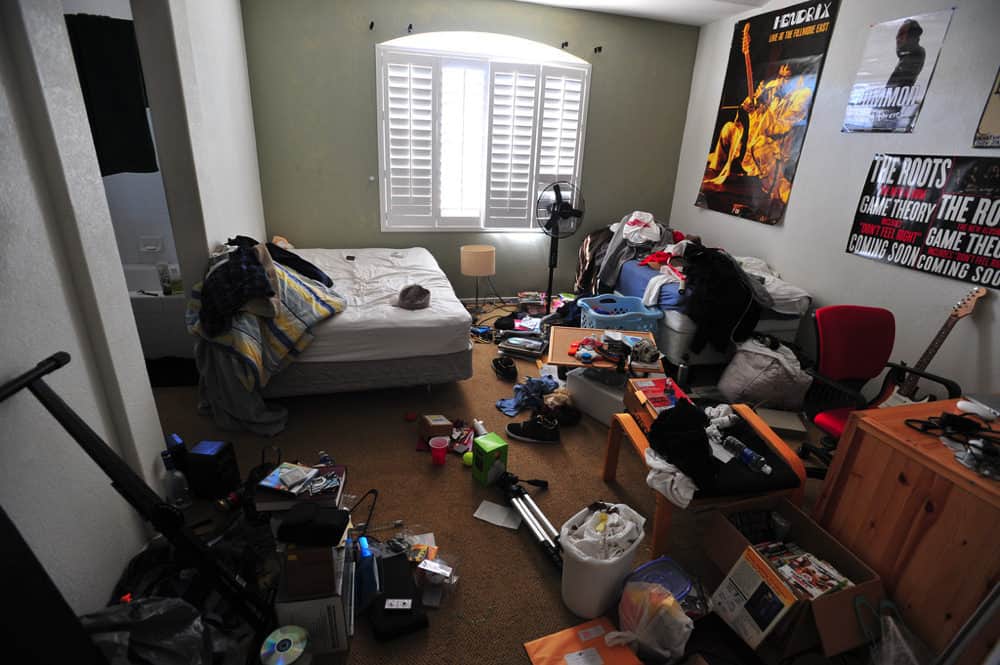
Once the clutter’s tackled, it’s time to clean everything. And I mean everything. First, take any of the clothes that were laying around and your bedding and wash them at high heat. Be sure to use the dryer, too, instead of hanging the laundry up to dry. The washing machine will kill some of the bed bugs, but it’s the heat from the dryer that will guarantee you’ve taken care of them.
Then, do the same with the drapes (yep, I’m afraid you’ll even have to take down the drapes). Make sure you transport everything in plastic bags to avoid spreading the infestation as you bring items from the bedroom to the laundry room.
Next, vacuum thoroughly. Get in every corner of the room, under the dresser, into the closet, and, of course, under the bed. As mentioned above, it’s important to deal with the contents of the vacuum right after you’re done going over the affected area. Dispose of the vacuum’s contents in a plastic bag immediately and bring it to an outdoor trash can.
Once that’s done, it’s time to move on to the main hub for bed bugs: your bed.
Move the Bed to the Center of the Room
Move the bed away from the wall and other furniture in the room. If your bed is against the wall, it can create a space where bed bugs hide safely from the treatment you’ll be applying. Moving the bed to the middle of the room gives them fewer places to hide away.
Cover the mattress and box spring with bed-bug-proof lining. Don’t worry about any bugs or eggs that are encased in the liner – they won’t be able to survive in that environment.
Check All Odds and Ends
Do a final inspection of every corner of the room, including baseboards and the inside of drawers.
Remove outlet and light switch covers and see if any bed bugs are hiding behind them.
Look for cracks or holes in the walls, along the baseboard, or where the ceiling meets the wall. Seal all of these little openings. It’s fine if you have to take out the caulking gun – whatever you have to do to block off these spots.
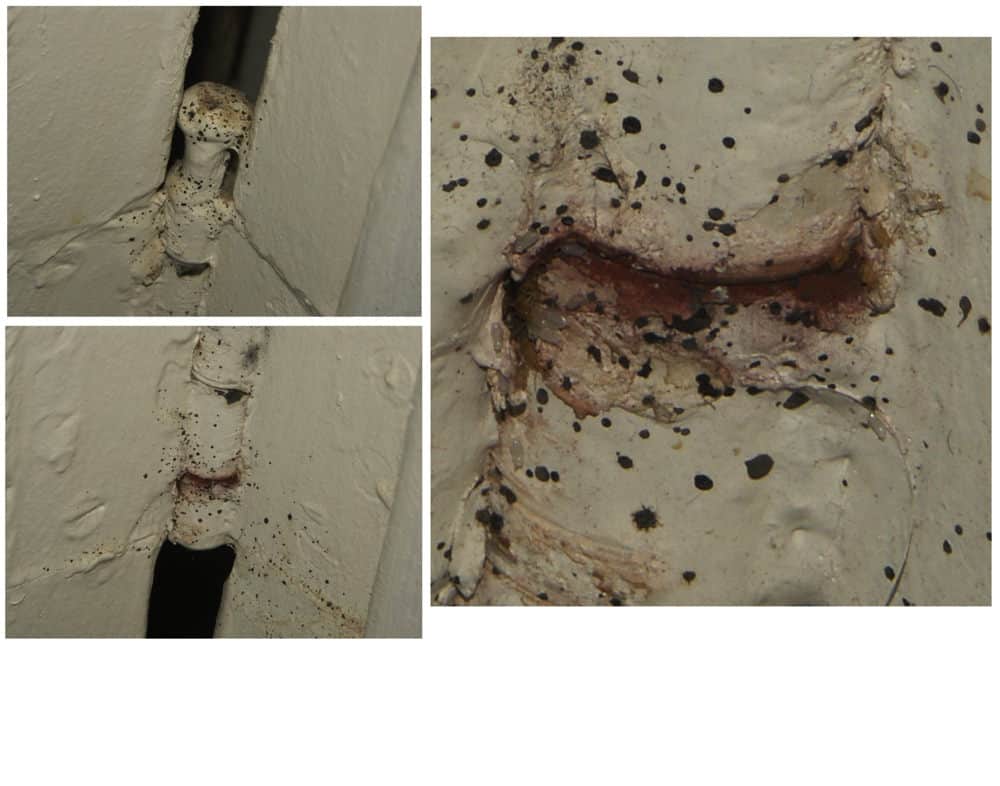
Once you’ve finished all these steps, you’re ready to finally apply treatment and start getting rid of your minuscule unwanted houseguests.
Cheap and Easy Ways to Kill Bed Bugs
If you’ve got a minor bed bug infestation, the good news is that taking care of it can be really simple and affordable. All you need to do is put in the time to do it right.
In fact, if you’ve followed all of the steps so far – containing the infestation and preparing the area that you will be treating – there’s a good chance you’ve already gotten rid of most, if not all, of your bed bugs.
But you can never be too sure. So, here are some of the ways you can make sure your bed bug problem is dealt with.
Steam Cleaning
As mentioned earlier, washing clothes gets rid of bed bugs, but only if there’s enough heat to kill them. Likewise, cleaning the affected area can work if you apply enough heat. And the best way to do that is with steam cleaning. Steam treatments can reach up to 120F and that is all it takes to get the job done.
The most obvious target for your steam cleaning will be any carpeting or rugs that might have bed bugs. Vacuuming these helps get rid of the bugs, but steaming them practically guarantees it. If you don’t have a steam cleaner, you can usually find one to rent somewhere (depending on your location, that kind of service might be available through a supermarket or department store); otherwise, you may have to hire a carpet cleaning service, though that can be harder on your budget.
Hand-held steamers are quite helpful in situations like these as well, and they tend to be rather affordable. If you have one, you can steam any areas or items that have (or that you suspect have) bed bugs. Just look at the specifications for the steamer first to make sure it will reach the required temperature. Heat will kill them, but just keeping them warm won’t do anything to help you.
Set Out Some Traps
There is a type of bed bug trap called “interceptors” that will be covered later in this article, in a separate section. That’s because its real purpose is to monitor the area to make sure bed bugs don’t reappear, something you’ll have to do once you’re done dealing with them.
In this section, the kind of traps we’re talking about are glue traps. Although there are DIY versions of these that you can try to make, glue boards are quite cheap if you purchase them from a hardware store or order them online. They’re like little cardboard tents with a sticky bottom that traps any bed bug that crawls across it. You can set these on the floor, on furniture, in drawers – anywhere you worry there might still be some stray bed bugs.
It’s important to note, though, that setting traps is not the most effective method. If you’re going to do it, be sure to use other methods as well.
Apply Diatomaceous Earth Powder
Diatomaceous earth powder is a mineral that’s been ground up into a very thin powder. It’s an affordable way to treat bed bugs and it doesn’t contain any chemicals that could be harmful to humans (you may need to read the labels to make sure it’s pure powder and doesn’t have any added ingredients).
Apply a thick layer of the powder in any area that has bed bugs. The bugs will eat the powder as they crawl through hit, which will kill them almost instantly.
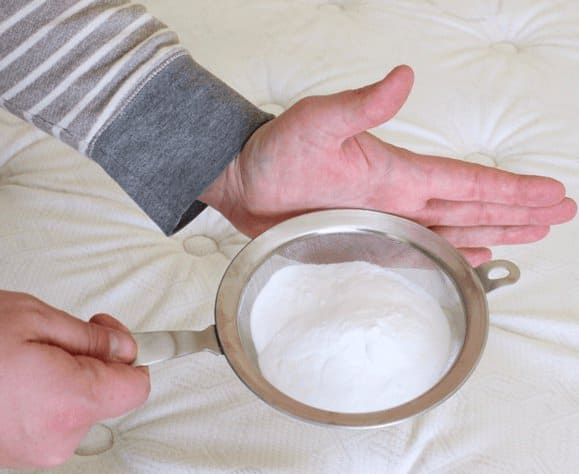
To be effective, the powder should be left in place for a few weeks. Then, it can be vacuumed up. Just to be safe, dispose of the vacuum’s contents the same way you did when you were prepping the area (in a sealed bag that is then left in the outdoor trash).
Intermediate Killing Methods
In the last section, we looked at some easy and cheap ways to get rid of bed bugs. Sometimes, however, that just doesn’t cut it. If the infestation is too big, the bugs too hard to reach, or you just can’t seem to get every last egg and bug, you need to use tougher stuff.
There are different insecticide products you can use, and we’ll cover a few of the common ones here. But you should be aware that no single product is the perfect solution. Each might be able to do the trick, but your best bet is usually a combination of them. If you want to be extra certain, you can purchase a bed bug kit that contains a variety of insecticides. Applying them all, or each in turn, will work most effectively.
Contact Sprays
As the name implies, contact sprays are insecticides that kill bed bugs on contact. They’re a good way to eliminate the bed bugs that are in sight and deal with the ones crawling around in the open. A contact spray, however, will no longer kill bed bugs once it has been applied. It dries quickly and, once it does, bed bugs can crawl through the sprayed area safely.
It’s best to get a product that specifies it is low toxicity, but that doesn’t mean you should always reach for the most natural product. Some contact sprays primarily contain soap or alcohol. While those are ingredients you can use without risking any harm to yourself or others, they also do too little harm to the insects themselves. They will kill some of the bugs, but not as well as a stronger spray would.
If you do decide to use one of these more natural alternatives, be aware that they aren’t able to kill bed bug eggs. If you’re using an alcohol- or soap-based spray, then, you will need to keep treating the same areas repeatedly over the course of days or weeks to ensure that you get the bugs as they hatch and prevent them from laying too many eggs.
Pyrethroid-Based Insecticide Spray
Unlike contact sprays, insecticides that contain pyrethroids will continue killing the insects after it has been applied to the area.
Two words of caution when it comes to using these sprays. First, they’re harsher than a lot of the other products we’ve discussed. You’ll need to be careful not to apply it when children are around or on anything they might then touch or lick.
Second, pyrethroid-based sprays are not very effective at combating bed bugs. It will kill some, but not all of them. To get some real results, you will have to use it in combination with other insecticides.
Desiccants
We mentioned diatomaceous earth powder above, but there are other types of desiccant dusts you can use if you need stronger stuff. You can, of course, apply more diatomaceous earth in combination with spray insecticides. But you can also use silica aerogel, which some believe is more effective at killing bed bugs. It is not toxic, but they can cause irritation, so exercise a bit more caution when using it.
If you buy a bed bug kit, chances are it will come with a bellow style duster. This will let you “spray” the dust in places that are hard to reach and allow you to apply it more precisely than you would if you were just sprinkling it. If you want to use desiccants but don’t want to buy a kit, consider buying a duster to maximize your results.
Advanced Killing Methods – Time to Call the Pros
If you still can’t get rid of the infestation even after using insecticides, it’s time to call in a professional exterminator to deal with the problem.
How to Find a Good Bed Bug Exterminator
Avoid calling the first name that comes up on your Google search. Exercise a bit of diligence so you can be sure you’re working with someone who does great work, comes highly recommended, and won’t overcharge you.
Call three or four different exterminators and get a quote from each. Make sure they tell you not only the estimated costs, but also the procedures and products they use to get rid of bed bugs.
Work with an exterminator who will use a variety of different methods to deal with the infestation. Just applying pesticides isn’t good enough – using multiple products and taking non-chemical steps like steaming and whole-house heat treatments are indicators of effectiveness.

Ask them about their effectiveness with bed bugs. You can’t necessarily expect a 100% success rate when it comes to bed bug extermination, but you should work with a company that has a good track record. Avoid companies who refuse to give you a straight answer on this – it’s possible they’re trying to hide a low success rate. You can also ask what happens if the bed bug infestation persists. Good exterminators often guarantee results, meaning they’ll return to deal with the infestation free of charge if their first attempt to eliminate it didn’t work.
Be wary of a company that gives you a quote without inspecting the problem first. That can be a sign that they’re looking to make a quick buck. Though be aware that the inspection itself may cost you – it’s not uncommon for companies to charge a consultation fee to inspect your premises and provide you some preliminary advice.
And make sure the exterminator you’re working with is licensed to use pesticides by the state. Every reputable company will be.
Cost of Bed Bug Extermination
There’s no fixed price when it comes to treating bed bugs. Every infestation is different, and the size of the problem can affect the cost. Different exterminators use different methods, too. Those that use more a bigger combination of approaches are typically more expensive than those that don’t. That’s one of the reasons it’s not always a good idea to hire the cheapest exterminator you can find.
In general, the cost falls somewhere between $500 and $1,500. That’s far more expensive than taking the DIY approach, but it’s a price you just might have to pay if your attempts to remove the bed bugs personally haven’t been successful.
How to Prevent a Re-infestation
If you’ve managed to eliminate bed bugs, congratulations! But the last thing you want is to have to go through all of this again. Here are some of the things you can do to make sure bed bugs don’t trouble you again.
Watch Out for Second-Hand Furniture
Buying second-hand furniture, clothing, and bedding is a common way of spreading bed bugs and inviting them into your home. Inspect every second-hand item carefully before you buy it (don’t be too shy to shine a flashlight on it before handing over your money). Take extra care with items that are being given away for free or sold at an incredibly low price – sometimes, it’s not the items the owner so desperately wants to get rid of, it’s the bugs that have taken up residence in them.
Mattresses and other furniture left on the curb for anyone who wants to pick it up for free are best left where they are, since these often carry bed bugs in them. Although it’s tempting to get a free mattress, especially if it still looks in decent shape, there’s a good chance you’re signing up for more than you bargained for.
Place any second-hand beddings into a plastic bag before bringing it into your home. And the first place it should go is not your bed, but the washing machine followed by the dryer (on high-heat settings).
Place Interceptors
Interceptors don’t look like much. They are just simple little plastic devices. But even though they’re unassuming, they’re going to be doing a lot of the work in helping you eliminate bed bugs.
Interceptors essentially have two main components. First, they have a space where the leg of the bed can rest. Then, it has a kind of moat around it. The moat has tall (well, tall for a bed bug, anyway) vertical sides that bed bugs are incapable of scaling.
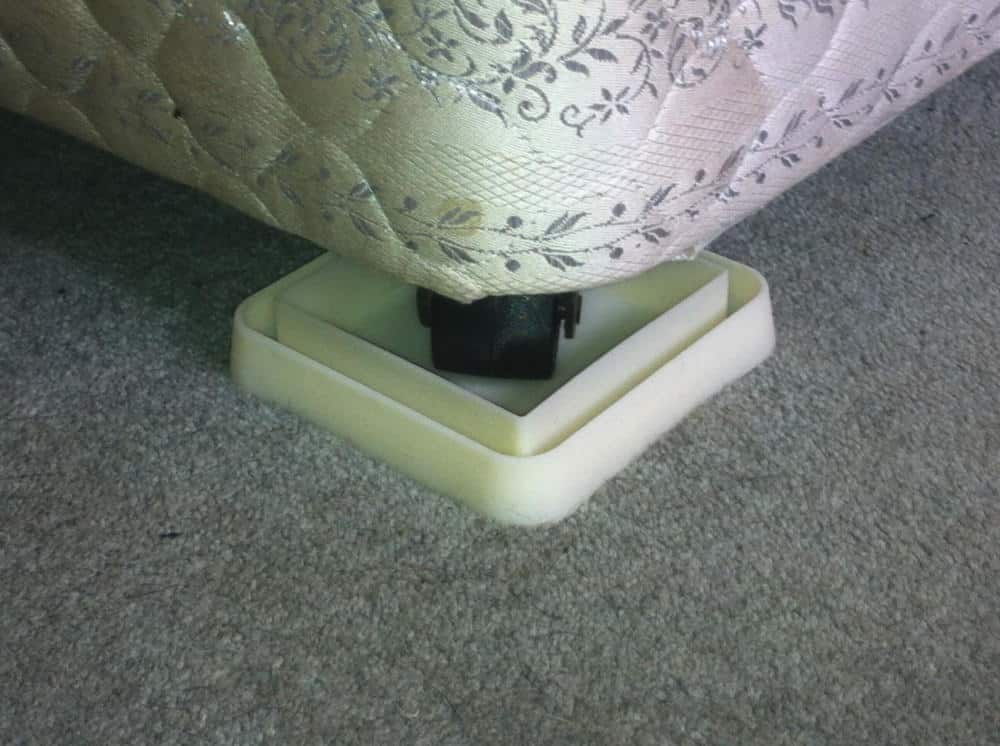
Install these under each leg of the bed will prevent bed bugs from climbing up to feast on you while you’re sleeping. You can also inspect them regularly to see how effective your bed bug treatment has been – a few dead bed bugs trapped in the moat is a good indication that there are more nearby.
Also be sure to place interceptors under the legs of any dresser, chair, or other items of furniture in the affected area.
Now, get comfortable with these interceptors because you’ll be living with them for quite some time – usually up to a year. This will allow you to keep an eye out for bed bugs and ensure that the problem doesn’t resurface.
The only downside to interceptors is that they catch a lot more than just bed bugs. Dust, dirt, and assorted debris can find its way into the moat and stay there. For that reason, they should be cleaned about once a month. This isn’t just for the sake of cleanliness; it’s also to prevent bed bugs from mingling with the debris and escaping your notice.
Another option is to make your own interceptor. There are some DIY tutorials online you can follow, but the basic idea is simple: a small container to house the leg of the bed that rests inside a larger container with tall vertical edges. It doesn’t matter what material they’re made out of, since it’s the shape that will do all the work.
Summary
Getting rid of bed bugs isn’t always easy. There’s a lot of work involved, between cleaning, containing, and preparing the area and then applying the actual treatment itself. But with a bit of effort, most infestations can be taken care of without having to call an exterminator and being left with an expensive invoice.


